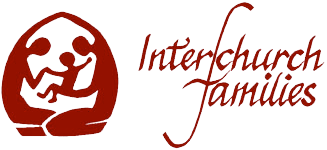555-555-5555
mymail@mailservice.com
Rudolf & Rosemari Lauber (Germany)
Netzwerk konfessionsverbindender
Paare und Familien
Report
on the second world conference of interchurch families, from 24 to 28 July 2003 at the Mondo Migliore conference centre near Rome
Summary
After the first world conference of interchurch families in 1998 in Geneva, at the World Council of Churches, the second world conference of 2003 took place near Rome, the home of the Pontifical Council for Promoting Christian Unity. It was on the theme: United in baptism and marriage – interchurch families called to a common life in the Church for the reconciliation of our churches. 228 adults, of whom some 20 were ministers from different denominations, and approximately 100 children and young people took part in the conference. The programme included presentations, round table discussions, workshops; simultaneous translation took place into the four conference languages (English, French, German and Italian). Every day there was morning and evening prayer, and in addition, there were three celebrations of the Lord’s supper / Eucharist respectively: Waldensian/Methodist/Reformed, Anglican/Lutheran and Roman Catholic. The basis of the presentations and the discussions was a theological paper prepared in advance of the conference, the work being done by an international committee. The conference participants adopted this as the ‘Rome paper’. In addition, a final message was drafted, discussed in plenary and agreed.
1. Aims of the world conference
• To inspire interchurch families as pioneers and path finders for ecumenism, to enable them to recognise as special the realities of their life together in its missionary role as contribution to the reconciliation of the churches.
• To be an exchange of the experiences of interchurch couples and families, reaching across national and linguistic barriers, to explore what it means to be united in baptism and marriage and to form a ‘domestic church’.
• To hold discussions with high ranking representatives of the churches and with theologians, in particular with members of the Pontifical Council for Promoting Christian Unity in Rome, in order to make the concerns of interchurch families clear to them.
2. Participants
228 adults from at least seven different denominations (interchurch couples, individuals, approximately 20 ministers from different denominations) came together for the conference, and with them around 100 children and young people. The participants came from the following countries: France, 71; England, 57; Italy, 24; Austria, 20; Switzerland, 19; Germany, 14; Canada, 9; USA, 8; Belgium, 2; Northern Ireland, 2; Australia, 2.
3. Proceedings of the world conference
The proceedings are to be seen in the attached programme (Document 1). Conference days Friday, 25 July and Saturday, 26 July included:
• At the start, a celebration of the Lord’s Supper in the Waldensian/Methodist/Reformed tradition, and on Saturday evening Holy Communion in the Anglican/Lutheran tradition.
• Presentations in the auditorium: on Friday with Waldensian theologian Daniele Garrone; on Saturday (after the reading of messages of greeting from, among others, Cardinal Walter Kasper) with Mgr. Fortino from the Pontifical Council for Promoting Christian Unity, and with Bishop Chiaretti, holder of responsibility for ecumenical affairs to the Italian Bishops’ Conference.
• Round table discussions following the presentations.
• Afternoon AGORA: participants had built stands, provided information about the situation in their countries, and distributed national reports translated into several languages.
• Sessions of workshops to close the days, each of approximately 10 participants, on given themes (see Document 2). These sessions took place in the park of the conference centre, in the shade of ancient trees.
During lunchtime on Friday, 25 July a visit to the Pontifical Council for Promoting Christian Unity was sandwiched in. A delegation of about 50 participants, from all the nations and denominations represented, made the journey to Rome. The delegation was welcomed there by Mgr Jack Radano, who gave an overview of the manifold activities of this papal body. Canon Martin Reardon, spokesman for the delegation, presented the Rome paper to Mgr. Radano in the four languages of the conference. There was a proposal that discussions at a deeper level take place between representatives of the national organisations of interchurch families and the Pontifical Council.
Sunday, 27 July began with a Roman Catholic celebration of the Eucharist. A bus journey to Castel Gandolfo followed, taking most of the conference participants to join in the Angelus prayer of Pope John Paul II. The Pope’s prayer ended with his greeting to all those groups present, mentioning the interchurch families from the world conference by name. The short text of the greeting, given in French, is attached as Document 3.
Next came the possibility of a visit to the Anglican Centre in Rome, or taking a short sightseeing tour of central Rome.
Sunday ended again with evening prayer, led in a very moving fashion by the young conference participants.
The final day of the conference, Monday 28 July, began with a plenary session in which, after various expressions of thanks, and a short discussion, the preparatory paper was approved as the ‘Rome paper’. This was followed by a discussion on the question of whether, where, and when, a third world conference should be held.
There was then a very lively debate about the final conference message, submitted in draft. An editorial team collected together the suggested alterations and enlargements and worked them into the draft. The resulting text was finally approved almost unanimously.
To conclude the conference, a joyful ecumenical service of worship took place in the church, with contributions from many of the participants, the children, and the young people. The ministers present, from their different denominations, ended the service with a blessing given by all of them together.
4. Important outcomes
The concrete results of the world conference lie in the documents agreed:
• The ‘Rome paper’, which can serve as foundation document for the future discussions with the church leaders, but also for discussions within the different national organisations.
• The final message, which expresses the visions and hopes not only of the conference participants, but also of all interchurch families.
Similarly important in outcome are the contacts established with leading church representatives. In particular, the contacts with the Pontifical Council for Promoting Christian Unity were deepened through
• The message of greeting to conference participants from Cardinal Walter Kasper
• The presentation from Mgr. Fortino, the Pontifical Council for Christian Unity’s authorised official spokesperson on the theme of interchurch families
• The reception of a delegation of conference participants by Mgr Radano at the Pontifical Council for Christian Unity. The ‘Rome paper’ presented there will certainly be read and evaluated with attention. This brings the possibility of a discussion in future at greater depth.
• Of no less significance in this connection is the fact that on Sunday 27 July, at Castel Gandolfo, at the Angelus prayer, the Pope made a special mention of interchurch families and blessed them.
Perhaps the most important, but unquantifiable, result of the conference, lies in the countless personal encounters, discussions, debates, at an international level between those who took part. Though the deepening of contacts between the members of national organisations a world wide network has come into being, one that can engage in dialogue with the churches, in order to represent the concerns of interchurch families.
One central theme was addressed again and again in all the discussions, in the workshops, and also in the presentations: making eucharistic hospitality at the Lord’s table possible for interchurch families. This burning concern had already been spelled out in the final message from the world conference in Geneva: As the smallest cell of the church and in this sense as house churches (‘ecclesiae domesticae’) we call urgently on our churches to meet our deep longing, by issuing a clear invitation to us to share together in the Supper of the Lord (and this is in all christian churches and communities), and thereby to express the hope of the whole Church for unity. Sadly so far this request has not yet been met. That is why it is renewed in the final message from Rome: We hope that further pastoral solutions for sharing together in the Lord’s Supper and the Eucharist in the denomination of the partner will be found, until such time as Christians enter into full eucharistic communion with one another.
In the final session of the world conference the participants spoke with an overwhelming majority for the holding of another world conference in four years’ time. Many participants put forward suggestions about how to organise such a follow up conference, and what the content should be. The network of national organisations mentioned above must clarify whether, when and how a third world conference should take place, and what visions and aims it ought to have. The suggestion of the Austrian representatives, to hold the next world conference in co-operation with the Hungarians in Budapest, drew particular attention.
5. Organisation
The international PREPROMA-committee was the body which staged the world conference. It consisted of 30 representatives from the four language areas. It was several years in preparation. The committee met twice, in Torre Pellice (north Italy) and in Lyon, to agree on the goals, the programme, and how the conference was to proceed. Within the PREPROMA-committee there was a leadership team of representatives from the four language areas, who met in two, several day sessions in Lyon to work on the detailed planning. This leadership team was also responsible for the organisation of the world conference. Joint co-ordination was in the hands of Pamela Fiévet and Nicola Kontzi-Méresse (Centre St. Irénée in Lyon). Melanie Finch (Association of Interchurch Families in England) stepped into the breach many times, and made a very special contribution to the success of the conference.
In view of the enormous difficulties – all the members of the PREPROMA-committee and the leadership team gave their time voluntarily and were very hard pressed because of their work and family commitments, the Italian member of the leadership team lives in Milan, a long distance from the Rome conference centre, and in addition to this was ill shortly before the world conference, the remaining members of the leadership team had only a small command of Italian, there was no organisational support at the centre, where the director spoke, as well as Italian, only a little French, and so on – it was a near miracle that the world conference, seen as a whole, went off well with only a very few mishaps.
What contributed considerably to this success in running the conference in spite of the difficulties was that the conference centre ‘Mondo Migliore’, a centre run by Catholic priests, Oblates of the Virgin Mary, offered virtually ideal conditions: all the conference participants had rooms in the complex of buildings lying above lake Alban in a very beautiful setting, the church was available for the services, there was enough room in the auditorium for the plenary sessions, even translation booths being incorporated, the large, spacious corridors were ideal for the AGORA, and, last but not least, all 320 adults and children fitted into the great dining room, where the food was excellent. The lovely park with the ancient, shady trees was the ideal place for the group discussions. Since the house rules were silence in the rooms after 11.00pm, the park also provided the place for the social time together in the evening.
Rudolf and Rosmarie Lauber, Germany
Contact Us
3rd Floor,
20 King Street,
London,
EC2V 8EG.
Contact Us
Telephone: +44 (0)20 3384 2947
Email: info@interchurchfamilies.org.uk
Registered Charity No. 283811

